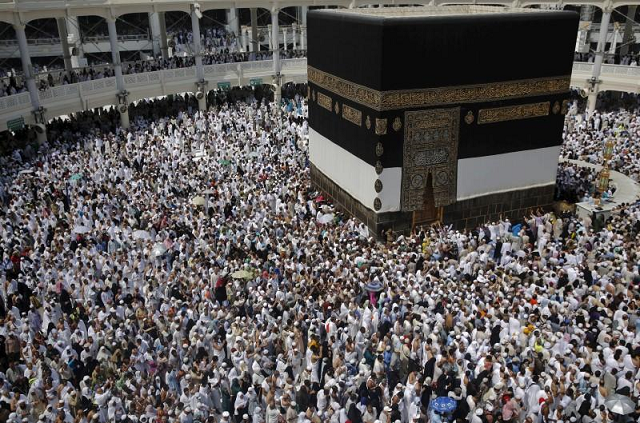
The ultra-conservative kingdom, which is undergoing dramatic social and economic reforms, has mobilised vast resources for the six-day journey, one of the five pillars of Islam.
"It's the dream of every Muslim to come here to Makkah," Frenchman Soliman Ben Mohri said.
"It's the ultimate journey. What worries me is the return to my normal life. For the moment, I am in a dream," the 53-year old told AFP.
Pilgrims descend on Makkah for 'smart Hajj'
Every Muslim is required to complete the hajj at least once in their lifetime if they have the means to do so.
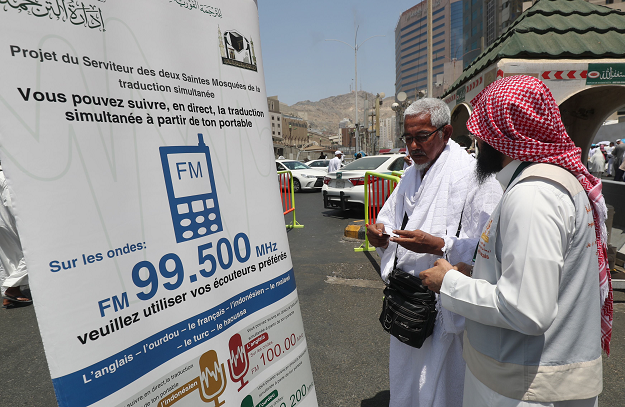 A translator helps pilgrims find information on a poster displaying helpful smartphone applications in the Saudi holy city of Makkah, ahead of the start of the Hajj pilgrimage.PHOTO:AFP
A translator helps pilgrims find information on a poster displaying helpful smartphone applications in the Saudi holy city of Makkah, ahead of the start of the Hajj pilgrimage.PHOTO:AFPTens of thousands of security personnel have been deployed for the pilgrimage, which was struck by its worst ever disaster three years ago when around 2,300 worshippers were crushed to death in a stampede.
This year, the Saudis have launched a "smart hajj" initiative, with apps to help pilgrims with everything from travel plans to medical care.
The interior ministry said on Saturday that the number of pilgrims arriving in Makkah had already surpassed the two million mark, mostly from abroad including large contingents from Egypt, India, Pakistan and Bangladesh.
Qatar accuses Saudis of barring Hajj pilgrims
Most of the pilgrims began moving on Sunday from Makkah to the nearby Mina valley where they will spend the night in fire-resistant tents.
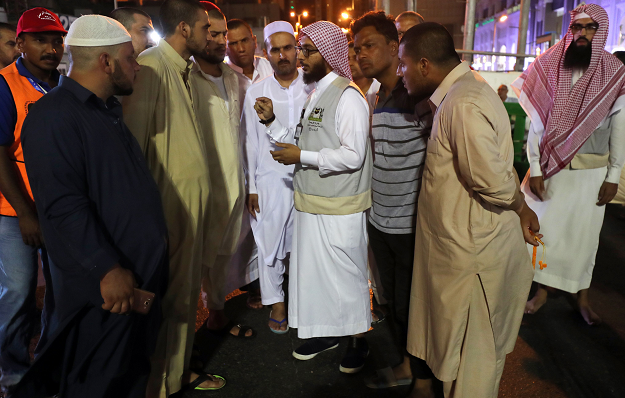 Muslim pilgrims speak to a translator in the Saudi holy city of Makkah.PHOTO:AFP
Muslim pilgrims speak to a translator in the Saudi holy city of Makkah.PHOTO:AFPThousands of buses and vehicles carrying the pilgrims lined the eight kilometre road from Makkah to Mina. Many pilgrims made the journey walking under the scorching heat of the sun.
On Monday, pilgrims will climb nearby Mount Arafat for the climax of the hajj, praying and reading the Quran.
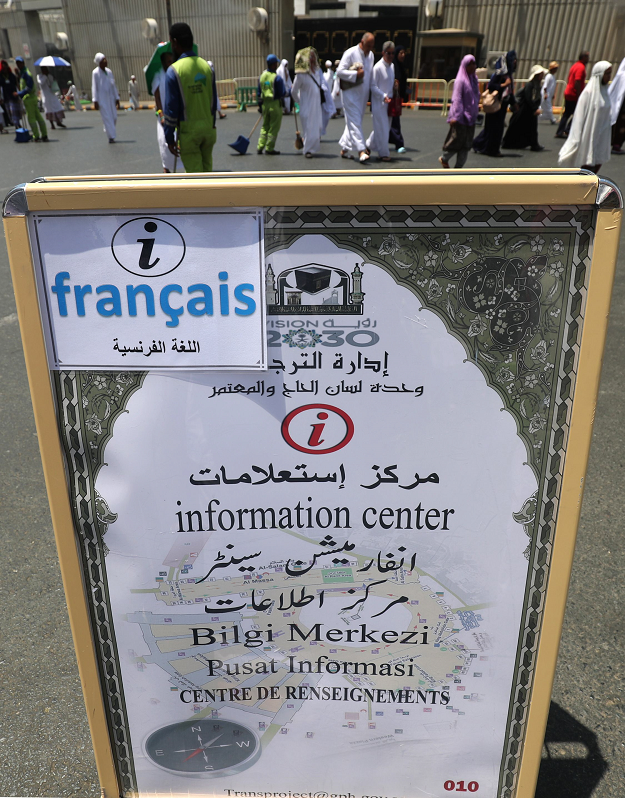 Muslim pilgrims walk past an information of the poster of the translation bureau in the Saudi holy city of Makkah.PHOTO:AFP
Muslim pilgrims walk past an information of the poster of the translation bureau in the Saudi holy city of Makkah.PHOTO:AFPThe prophet Mohammed delivered his final sermon from Mount Arafat to Muslims who had accompanied him on his final hajj, according to Islam.
After sunset, pilgrims head to Muzdalifah, half-way between Arafat and Mina, where they stay at least until midnight.
Saudi Arabia tests Japan-inspired 'nap pods' for Hajj
They gather pebbles to perform the symbolic stoning of the devil on the eve of the Eidul Azha feast, which marks the end of hajj.
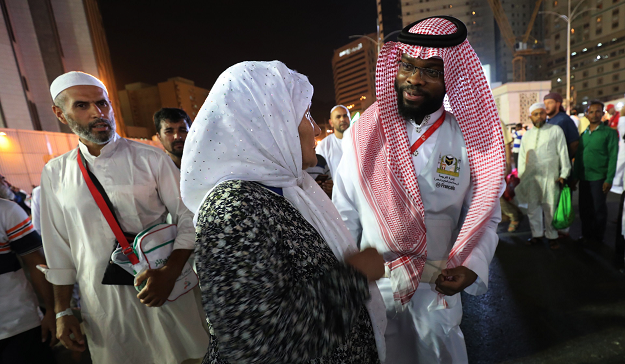 The six-day Hajj, starts today.PHOTO:AFP
The six-day Hajj, starts today.PHOTO:AFPThe hajj in numbers
The hajj is one of the world's largest annual gatherings.
Here are some figures illustrating its scale:
- More than two million pilgrims are taking part this year, according to official figures, compared to 1.86 million in 2016 and just 24,000 in 1941.
- Some 18,000 civil defence employees, among tens of thousands of security personnel, are helping safeguard pilgrims, officials say. Additionally, thousands of security cameras have been set up along the pilgrimage route.
- Twenty-five hospitals backed by 180 ambulances and more than 30,000 health practitioners have been mobilised to provide emergency services to pilgrims, according to the hajj ministry.
- Tens of thousands of air-conditioned tents have been set up to house pilgrims.
- Around 14,000 international and domestic flights have so far transported pilgrims, according to official figures. Around 21,000 buses have also been used.
- Around 16,000 telecommunication towers and 3,000 WiFi access points have been set up to serve pilgrims, the hajj ministry says.
- Eight million copies of the holy Koran and their translations as well as other religious books will be handed out to pilgrims, official figures show.
- Saudi Arabia hopes to welcome 30 million pilgrims annually in the kingdom by 2030. Muslims also flock to the country for the umra pilgrimage, which can be performed at any time of the year.
- Around 54 million pilgrims have attended the hajj over the past 25 years, according to official figures.
This year's pilgrimage comes with the oil-flush kingdom witnessing unprecedented change, including an end to a ban on women driving.
While rights campaigners have welcomed the reforms, they have also expressed alarm about a crackdown on dissent.
Although the kingdom's young de facto leader, Crown Prince Mohammed bin Salman, has spearheaded the changes, religion remains a key force in Saudi Arabia.




1732626034-0/BeFunky-collage-(92)1732626034-0-165x106.webp)


1732618327-2/Untitled-design-(7)1732618327-2-270x192.webp)
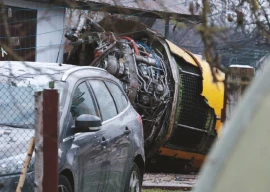








COMMENTS (1)
Comments are moderated and generally will be posted if they are on-topic and not abusive.
For more information, please see our Comments FAQ